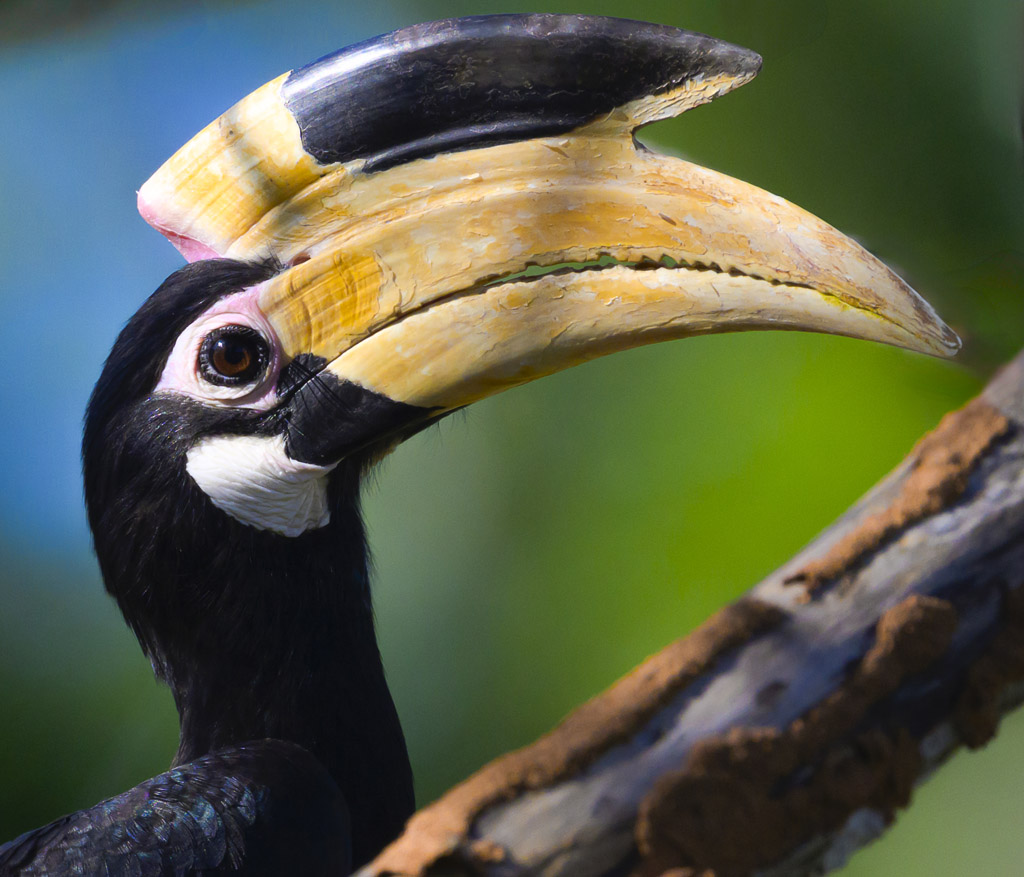One rainforest. One forest. Two national parks. Countless bumpy roads. One hundred eleven new bird species. All this in just five wild and wonderful days in Sri Lanka.
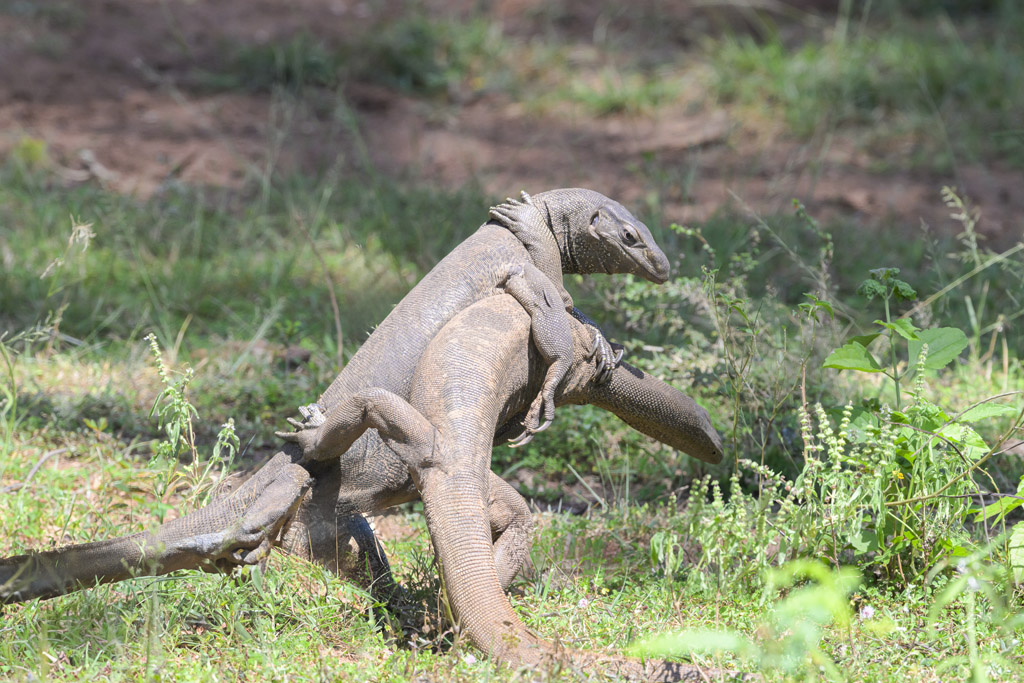
Monitor Lizards. Prehistoric grapplers in a midday showdown- with tail whips and firm grips!
Going on a birding and wildlife safari in Sri Lanka is like stepping into a nature documentary – except you’re right in the middle of it, sweating, dodging branches, and trying to focus your camera while a monkey side-eyes your snack. The dense forests and tangled undergrowth make bird photography tricky, but the thrill of spotting something new makes up for it.
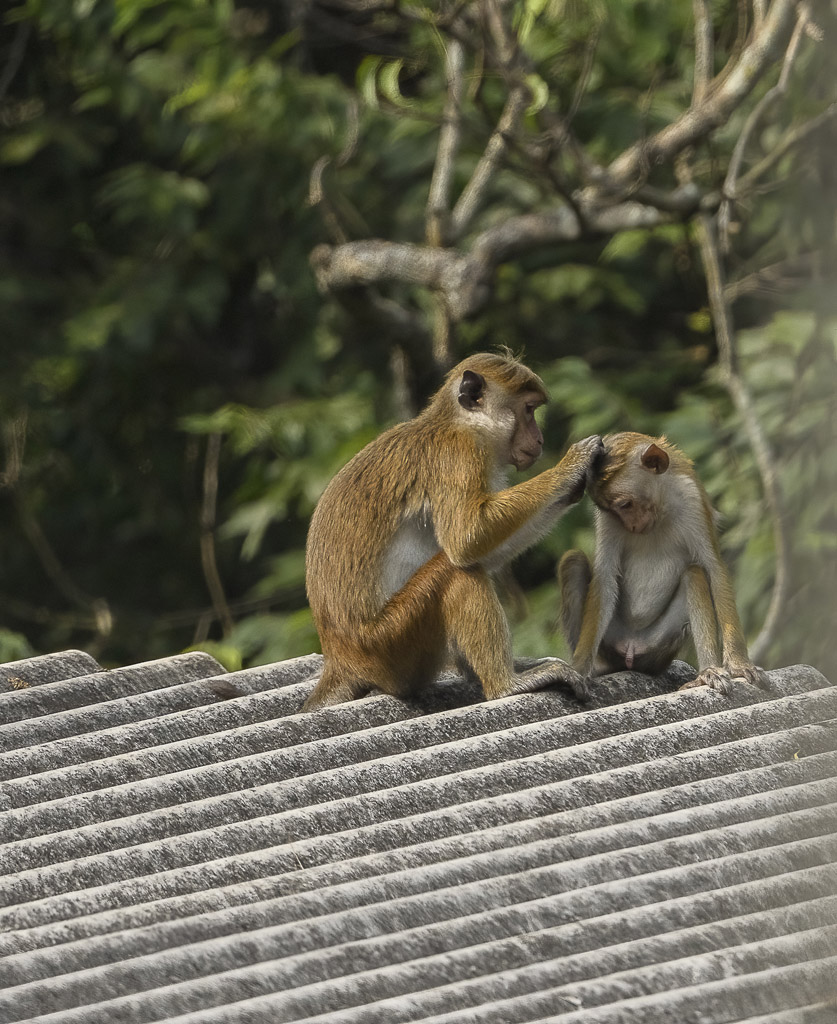
Toque Macaques Grooming: Tiny hands, tender moment- macaque mom caring for her youngster.
Unlike many birding hotspots, the lodges here don’t use feeders or platforms to attract birds – something I quickly learned isn’t part of the culture. My suggestion to add some? Met with polite smiles and a firm “nope.” Sri Lanka takes its “let nature be” approach seriously.
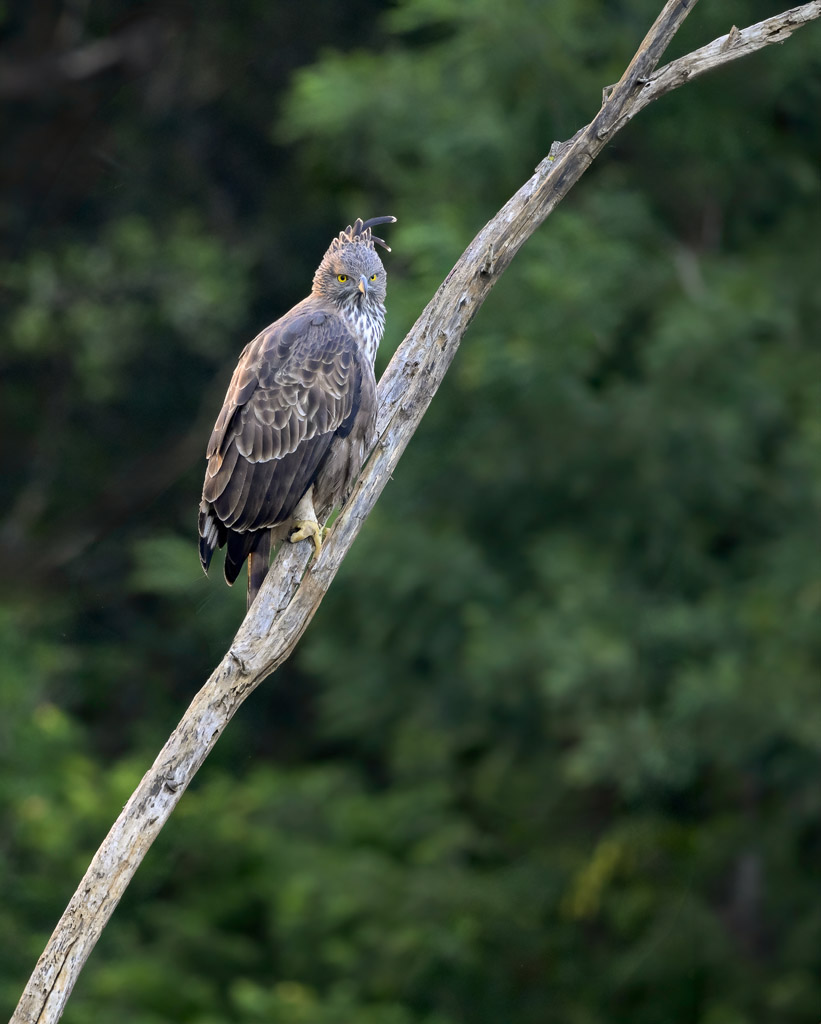
Changeable Hawk-Eagle: This sharp-eyed raptor is always perched high, scanning below for unsuspecting prey.
The Journey Begins
Getting there was an adventure in itself – 22 hours of travel from Savannah to Colombo via Emirates Airlines, which, by the way, felt more like a flying hotel than a plane. Think of lie-flat seats, warm blankets, and service that makes you feel like royalty. With hydration sticks in hand (to battle jet lag like a pro), I powered through 10 time zones and landed in a world where wildlife rules.
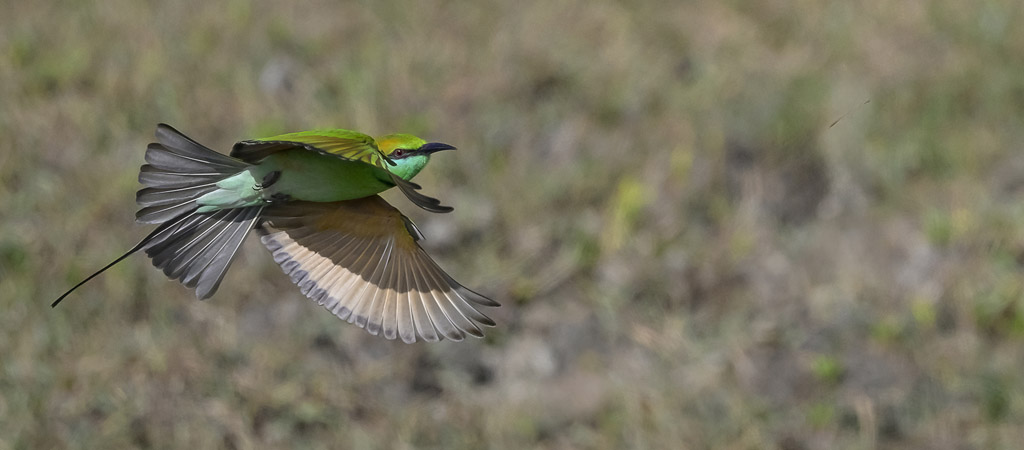
Green Bee-eater in Flight: This amazing bird hunts flying insects with an unmatched grace.
Sinharaja Forest Reserve
First stop: Sinharaja Forest Reserve, Sri Lanka’s last big stretch of untouched tropical rainforest and a UNESCO World Heritage Site. It’s about 33 square miles of thick, green jungle, home to rare trees, butterflies, and more birds than I could keep track of.
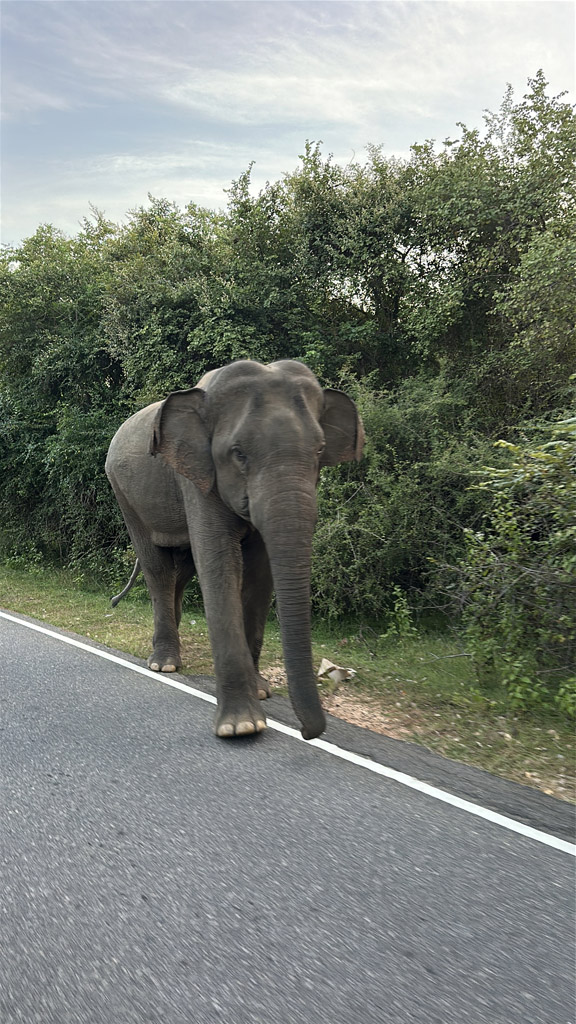
Wild Elephant: No hurry, casually claiming the road as his afternoon path. Driving at night is a bit scary here.
Winding through the narrow trails, we were surrounded by the calls of birds I’d only seen in books – like the red-faced malkoha, Sri Lanka spurfowl, and green-billed coucal. The Sri Lanka blue magpie even showed up for breakfast, watching my plate like a hopeful puppy. Despite the thick foliage and low light making photography a challenge, the sheer number of birds and unique plant life made every step feel like a discovery.
The forest is alive with movement – not just from birds, but also from its population of purple-faced langurs, a primate species found only in Sri Lanka. These shaggy-haired, wide-eyed monkeys swung effortlessly through the trees above us, sometimes stopping to peer down as if they were as curious about us as we were about them. Occasionally, a giant squirrel – a creature as big as a housecat – would scurry across a branch.
One of the highlights of Sinharaja is the phenomenon of “bird waves” – mixed-species feeding flocks moving through the forest in coordinated chaos. Within seconds, trees that seemed empty were filled with motion as dozens of birds, from drongos to babblers, swarmed an area to feed together. It was mesmerizing, like watching an orchestrated flash mob of feathers.

An up-close and personal hello with an Asian elephant – checking for any snacks!
Udawalawe National Park
From the dense rainforest, I transitioned into a completely different world. Udawalawe National Park, a vast, open landscape, feels more like the African savanna than tropical Sri Lanka. Spanning some 120 square miles, Udawalawe is best known for its elephants, hundreds of them.
It didn’t take long to find them. Within minutes of the first game drive, we spotted a family moving through the grasslands, led by a massive matriarch. Unlike some other places in Asia where elephants are often in conflict with human settlements, Udawalawe provides a sanctuary where they roam freely. We watched in awe as they used their trunks to strip bark from trees, playfully tossed dirt onto their backs to keep cool, and nuzzled their young with a gentleness that felt almost human.
But Udawalawe isn’t just about elephants. The park is also home to water buffalo, sambar deer, and crocodiles that lurk in the shallows of the Walawe Reservoir. And then there are the birds – so many birds. Crested serpent eagles perched on dead branches, scanning the grasslands for prey, while vibrant green bee-eaters flicked through the air like tiny, iridescent acrobats.
Despite spending hours scanning the trees and rocky outcrops, we never did spot a leopard. Our guide, however, assured me they were there, watching us, even if I couldn’t see them.
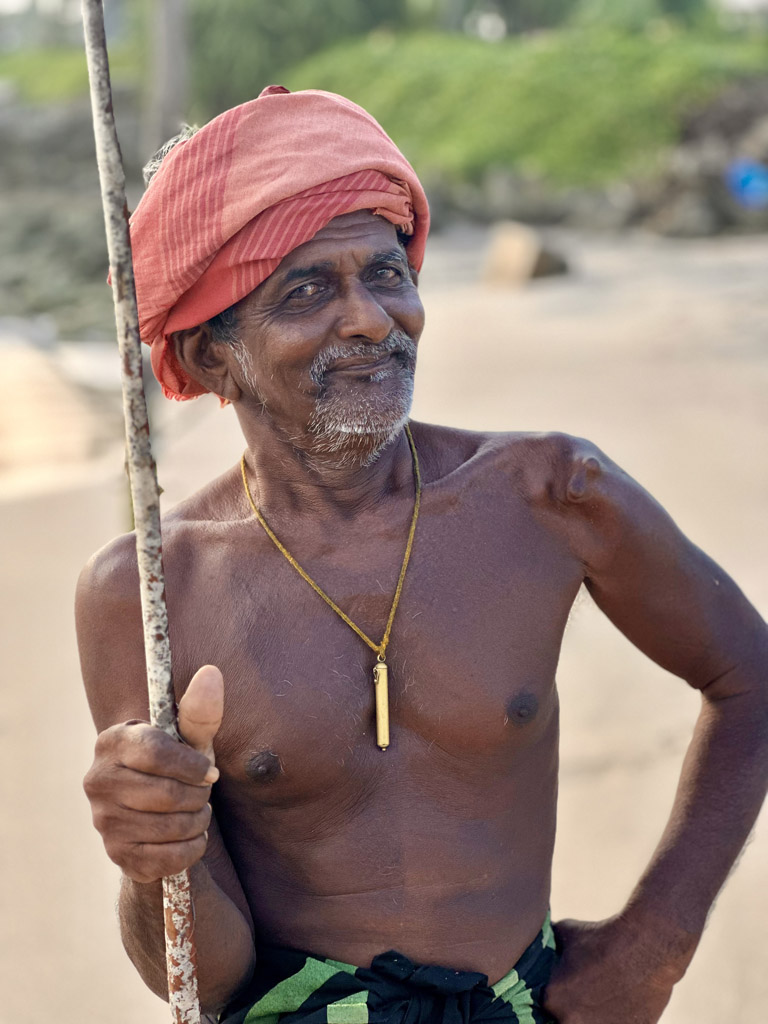
Sri Lankan Stilt Fisherman:He climbed down from his perch in the water to have his portrait taken by Lucy.
Bundala National Park
Next up was Bundala National Park, a completely different ecosystem. Located along Sri Lanka’s southeastern coast, this Ramsar-designated wetland spans 24 square miles and is a paradise for birders. Unlike Udawalawe’s dry scrub and grasslands, Bundala is all about water – lagoons, salt pans, and mangroves that serve as a magnet for migratory birds.
One of the first things I saw upon entering the park was a massive flock of greater flamingos, their pink feathers glowing in the morning light. They weren’t alone. The wetlands were teeming with life. Painted storks, which look like a cross between a wood stork and a roseate spoonbill, waded through the shallows, while pied kingfishers hovered over the water before plunging in headfirst.
Crocodiles lounged along the muddy banks, looking eerily prehistoric, and toque macaques darted in and out of view. Then, as if scripted by nature itself, a lone elephant emerged from the mangroves, walking slowly toward the water. There was something almost cinematic about it, a reminder that, in places like this, wildlife still moves to its own rhythm, untouched by human schedules.
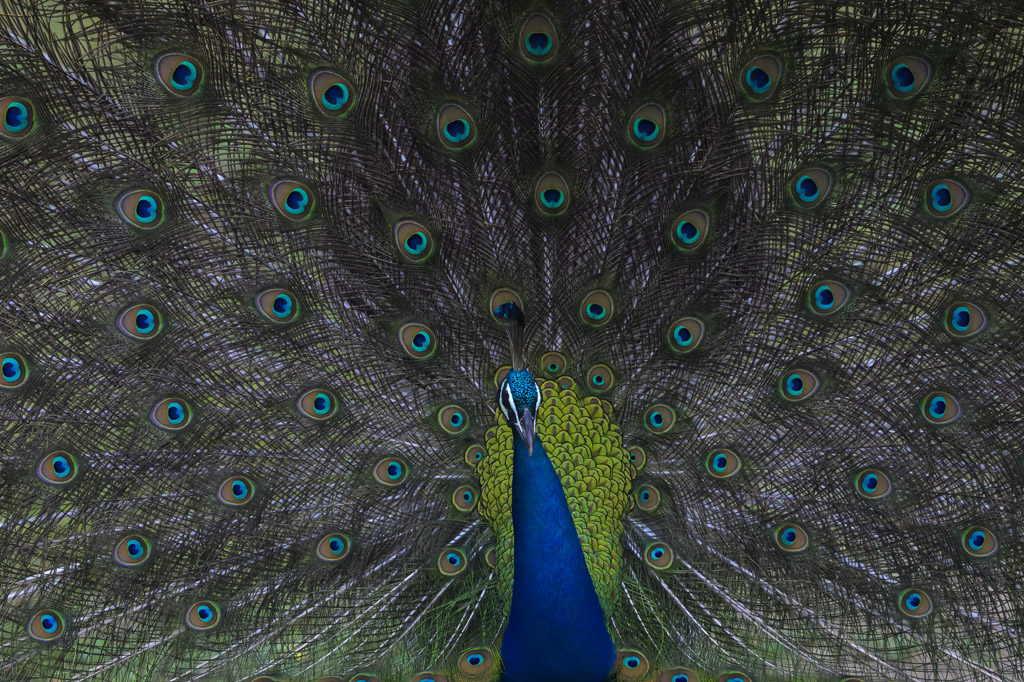
Indian Peafowl Displaying. Flamboyant feathers- nature’s show-off in full, dazzling display mode – hoping to attract a girlfriend.
Lunugamvehera National Park (Yala Block V)
My final stop was Lunugamvehera National Park, which serves as a crucial corridor for elephants moving between Yala and Udawalawe. Covering about 90 square miles, this park is a mix of dry monsoon forest, scrubland, and lakes, making it a hotspot for all kinds of wildlife.
Here, peacocks strutted through the grasslands like they owned the place, their iridescent feathers shimmering in the sunlight. The Malabar pied hornbill, with its oversized yellow beak, was impossible to miss, and we were lucky to spot several perched in the trees.
While we didn’t find any leopards, the landscape itself was worth the visit – rolling hills, ancient trees, and waterholes dotted with bathing elephants. And just when we thought we’d seen it all, a sudden rustling in the bushes revealed a group of wild boars trotting through the undergrowth, tails raised like little flags.
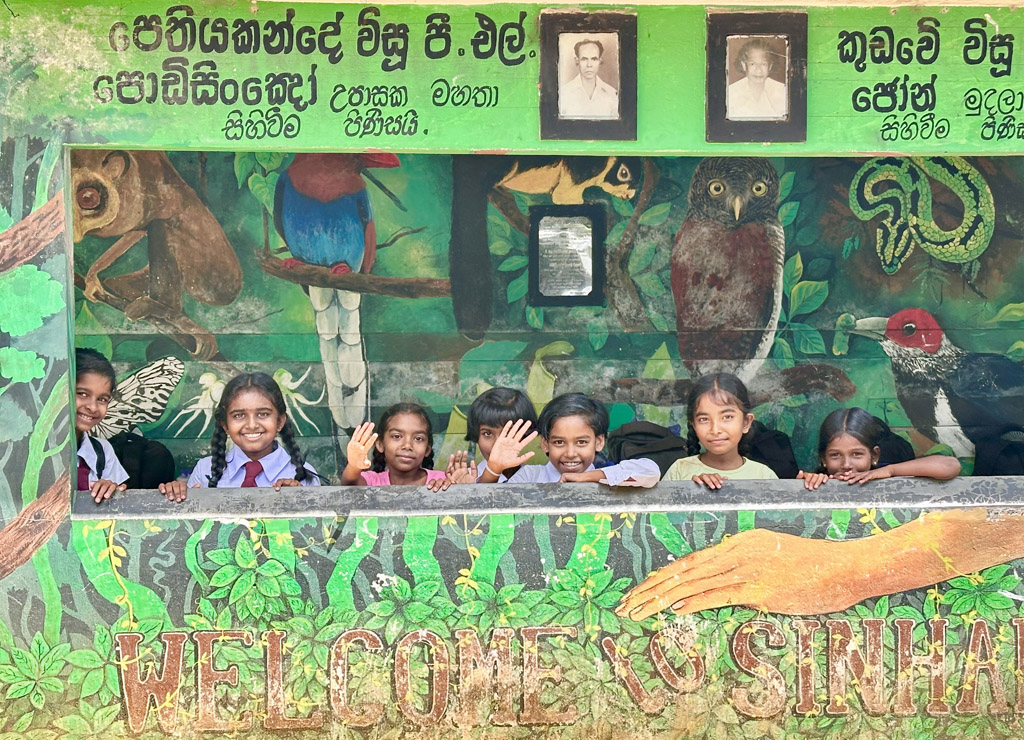
Village Schoolchildren at Sinharaj. Bright smiles and waves from the future of Sri Lanka.
More Than Just Wildlife
Beyond the wildlife, Sri Lanka’s culture was just as captivating. The street markets were a sensory overload, with spices, bright textiles, the sounds of bargaining vendors, and the occasional monkey trying to grab a snack. The people were warm and welcoming, always eager to share a story or a smile.
And the primates – oh, the primates. Toque macaques seemed to be everywhere, from temple ruins to roadside trees, while purple-faced langurs lounged in the treetops like jungle royalty. Their antics never got old. Watching them interact felt like peering into a tiny, furry society.
Sri Lanka is a dream for birders and wildlife lovers, but it’s not always easy. The dense forests make photography a challenge, and some animals stay frustratingly out of sight. But the flip side? Everything you see is real. No staged feeders, no artificial setups – just wildlife being wildlife.
If you’re looking for an adventure that blends incredible animals, stunning landscapes, and rich culture, Sri Lanka delivers. I left with a newfound respect for its conservation efforts, a camera full of memories, and a strong desire to go back and finally spot that elusive leopard.
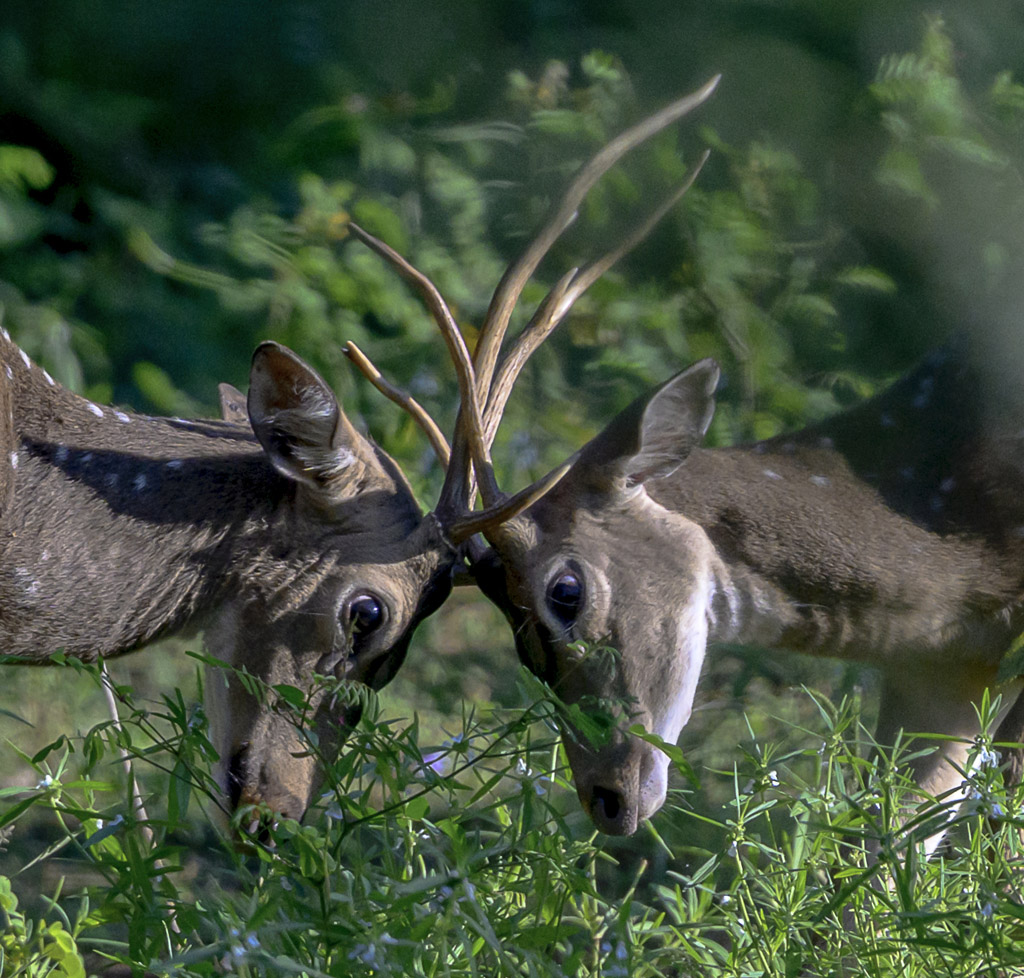
Spotted Deer with Locked Antlers: Two stags in a quiet standoff, testing strength.

